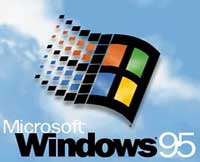 It’s Tin For Win95
It’s Tin For Win95
Yes, that’s right, Wednesday marked 10 years of vaguely intelligent computing. 10 years ago, Windows 95 was released. It’s weird, because it’s 10 year old technology, but it really doesn’t seem that old: I still remember using it at school on old computers. Makes you wonder why Microsoft are still using a ten year old interface (OK, it’s shiny and got a plasticky look now, but you know what I mean).
The Washington Post has an interesting read on the subject here, basically an announcement they wrote about it at the time. It’s funny to read how some things about marketing campaigns for high-profile software releases have changed nowadays, and what parts have stayed exactly the same. One thing everyone will likely recognise is the hype!
As granddad would say: “It was better in the old days!”
 Browse the Web on PSP
Browse the Web on PSP
Despite only officially being available in Europe from the 1st of September, the software updates for it have finally reached v.2.0. This latest update includes a host of exciting new features, including a Web browser and the ability to play AAC music tracks. These added features for a handheld gaming system that is already looking very promising, serve to make the gadget a must-have for every technology-conscious teen under the sun. Being able to browse the Web on the device, which incidentally has Wi-Fi technology, might even make it a laptop replacement of sorts. Beware though: The device has no keyboard, so typing long emails on it might become a little tiresome, as it uses a virtual on-screen keyboard for text input.
I have briefly played around with a PSP, as a friend of mine was in Japan and brought one back with him. The graphics look awesome, despite the text being Japanese, and I can’t wait to get my hands on one!
Laptop Battery Low Warning![]() The Register is running a story on how Panasonic and Intel are working together to make a 12-hour laptop battery. Can’t wait for this technology to filter down to phones and other small consumer electronics, as battery technology is the one thing the vast majority of gadgets still seem way behind on. It’s all fine and dandy having a million and one functions in one device, but if the battery only lasts two hours, then to me, it’s no use.
The Register is running a story on how Panasonic and Intel are working together to make a 12-hour laptop battery. Can’t wait for this technology to filter down to phones and other small consumer electronics, as battery technology is the one thing the vast majority of gadgets still seem way behind on. It’s all fine and dandy having a million and one functions in one device, but if the battery only lasts two hours, then to me, it’s no use.
Apparently, the technology works by adding a small amount of Nickel to the standard ingredients of a battery pack.
Remains to be seen how long this will take to mature, but in the meantime, I can always hope for cold fusion to arrive!
 Upgrades To Flight Mode
Upgrades To Flight Mode
With all the new gismos appearing on phones nowadays, it seems a shame to be unable to use them on a plane, ofcourse with all the wireless features switched off. This is why phone companies started introducing a concept called flight mode.
The theory behind this simple setting on a handset is to allow users to utilize all the features on their phones, when they’re not allowed to have anything that transmits radio signals. What, then, is the use of this if you’re not allowed to use it? I recently came back from holiday, was sitting there in the plane, minding my own business, trying to reply to some mail on my Blackberry, when a member of the flight-crew and asked me to switch it off. I tried to explain that a) it was in flight mode, and so wasn’t going to harm anyone, and b) that I had some work to do, so could he please leave me alone.
The flight attendant then stated that it was company policy to make people turn their phones totally off at all times, adding that I could use my laptop instead if I so wished. Now bear in mind the stupidity of this statement: My laptop has GPRS, 3G, Bluetooth and Wi-Fi connections, and would likely broadcast the hell out of anywhere, and the flight attendant would rather I use it than my phone which is innocently sitting in there flight mode, not bothering anyone. Trying to explain this resulted in a rapid degrading of his ability to speak English and ended with him just pointing to my laptop and sticking his thumbs in the air. The airline, which shall remain nameless for now as I don’t want to stir up any trouble, will not be receiving my custom again. When will airlines realise that they have to be nice to people and move with the times a bit more to receive their custom? In these days of cut price travel, it’s all about value-added services, and this certainly is one of them.
I was interested then because of this, about what I read regarding the Consumer Electronics association trying to make it possible to easily determine whether a phone is in flight mode or not. Can’t wait to see some results, but I fear it may then still be a case of training flight crew to know what it means.
 After our clapped out Sony mini-system refused to play one track too many and the usual thump on the side failed to yield the required result, we realised it was time to find a new stereo system for the office.
After our clapped out Sony mini-system refused to play one track too many and the usual thump on the side failed to yield the required result, we realised it was time to find a new stereo system for the office. After several trudges up London’s hi-fi Mecca, Tottenham Court Road, and long periods scanning the minutiae of online spec sheets, we decided that the Onkyo looked like the one for us.
After several trudges up London’s hi-fi Mecca, Tottenham Court Road, and long periods scanning the minutiae of online spec sheets, we decided that the Onkyo looked like the one for us.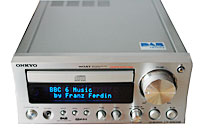 Unlike many other all-in units in the same bracket, this puppy offers a ‘proper’ amplifier with high-quality Wolfson DACs delivering accurate digital-to-analogue conversion and discrete output stage circuitry for a clean output signal.
Unlike many other all-in units in the same bracket, this puppy offers a ‘proper’ amplifier with high-quality Wolfson DACs delivering accurate digital-to-analogue conversion and discrete output stage circuitry for a clean output signal.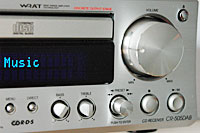 Admittedly, most of the channels sounded absolute rubbish, but it was a revelation to find so much content available.
Admittedly, most of the channels sounded absolute rubbish, but it was a revelation to find so much content available.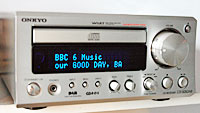 The FM and AM tuners were equally straightforward enough to sort out, with the auto scan quickly scooping up a list of available radio stations.
The FM and AM tuners were equally straightforward enough to sort out, with the auto scan quickly scooping up a list of available radio stations. The system would make a great bedroom, kitchen or study stereo system, offering a huge range of radio channels and enough poke to accompany the occasional air guitar wig out or party.
The system would make a great bedroom, kitchen or study stereo system, offering a huge range of radio channels and enough poke to accompany the occasional air guitar wig out or party. 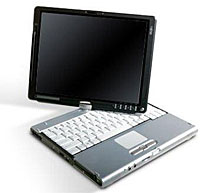 Fujitsu LifeBook T4020
Fujitsu LifeBook T4020 The Windows XP Tablet PC Edition 2005-powered convertible Tablet PC comes fitted with a 56K V.90 modem, Ethernet and Atheros Super AG or Intel PRO/Wireless 2915ABG Wi-Fi connectivity, with the option to add Bluetooth.
The Windows XP Tablet PC Edition 2005-powered convertible Tablet PC comes fitted with a 56K V.90 modem, Ethernet and Atheros Super AG or Intel PRO/Wireless 2915ABG Wi-Fi connectivity, with the option to add Bluetooth.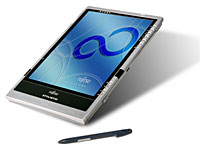 Running on Microsoft Windows XP Tablet PC Edition 2005, the Stylistic ST5032 tablet PC comes in two sizes, with customers able to choose between the 12.1″ XGA and 10.4″ indoor/outdoor displays.
Running on Microsoft Windows XP Tablet PC Edition 2005, the Stylistic ST5032 tablet PC comes in two sizes, with customers able to choose between the 12.1″ XGA and 10.4″ indoor/outdoor displays.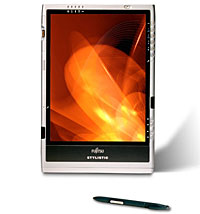 Cranking up his PR offensive to eleven, Moore continued, “Fujitsu offers a broad array of mobile solutions with the features, security, flexibility, reliability and ease of integration these companies need – all at competitive prices”.
Cranking up his PR offensive to eleven, Moore continued, “Fujitsu offers a broad array of mobile solutions with the features, security, flexibility, reliability and ease of integration these companies need – all at competitive prices”. After an encouraging response from listeners, Virgin Radio has announced that it will be making its Sunday afternoon programme ‘The Tim Lovejoy Show’ available as a podcast.
After an encouraging response from listeners, Virgin Radio has announced that it will be making its Sunday afternoon programme ‘The Tim Lovejoy Show’ available as a podcast. Lovejoy’s sports and entertainment show is broadcast weekly from 4pm to 7pm, and Virgin have said that they’ll make the “best bits” available for consumers to download to their MP3 players from 28th August.
Lovejoy’s sports and entertainment show is broadcast weekly from 4pm to 7pm, and Virgin have said that they’ll make the “best bits” available for consumers to download to their MP3 players from 28th August. Following
Following 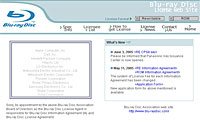 We think that Blu-Ray’s dogged pursuit for high capacity (possibly in the face of Unified DVD), and the fact that Sony are driving Blu-Ray is no coincidence.
We think that Blu-Ray’s dogged pursuit for high capacity (possibly in the face of Unified DVD), and the fact that Sony are driving Blu-Ray is no coincidence.  Cover layer thickness difference
Cover layer thickness difference
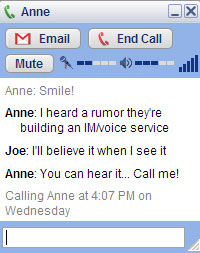 The program, Google Talk, is based on the open source Jabber protocol and competes directly with the three major providers of instant messaging – AOL, Microsoft and Yahoo.
The program, Google Talk, is based on the open source Jabber protocol and competes directly with the three major providers of instant messaging – AOL, Microsoft and Yahoo.  The software will let users have multiple voice sessions open at the same time, but only one can be active at any given time.
The software will let users have multiple voice sessions open at the same time, but only one can be active at any given time. 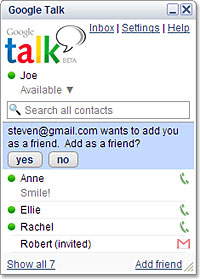 Currently, the three major messaging services are closed shops that generally don’t permit users to send messages to and from competing services – a source of continuing frustration for many IM users.
Currently, the three major messaging services are closed shops that generally don’t permit users to send messages to and from competing services – a source of continuing frustration for many IM users.  Peter Saint-Andre, executive director of the Jabber Software Foundation, estimated that 13.5 million use the Jabber standard, based on figures from Osterman Research.
Peter Saint-Andre, executive director of the Jabber Software Foundation, estimated that 13.5 million use the Jabber standard, based on figures from Osterman Research. 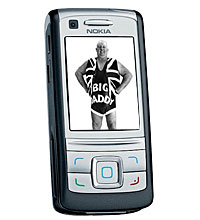 Nokia has risen to become King Of The Hill of 3G phones with a market share of 17%, with its attractive range of 3G phones trouncing products from rivals NEC and LG.
Nokia has risen to become King Of The Hill of 3G phones with a market share of 17%, with its attractive range of 3G phones trouncing products from rivals NEC and LG.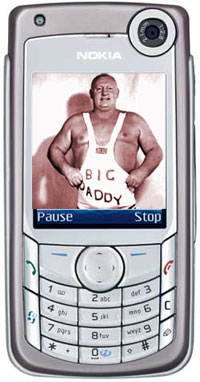 Previous 3G front-runners Motorola and LG have been overtaken by Nokia, with the report warning the manufacturers that they “have significant work to do to match up in the next battle for WCDMA phones priced below US$200 (~£111, €164~) wholesale, which will present significant mass-market opportunities in 2006 to 2010”.
Previous 3G front-runners Motorola and LG have been overtaken by Nokia, with the report warning the manufacturers that they “have significant work to do to match up in the next battle for WCDMA phones priced below US$200 (~£111, €164~) wholesale, which will present significant mass-market opportunities in 2006 to 2010”.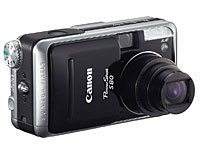 Canon has announced its new PowerShot S80 consumer camera, an eight megapixel compact camera with a wide range of auto and manual controls.
Canon has announced its new PowerShot S80 consumer camera, an eight megapixel compact camera with a wide range of auto and manual controls. 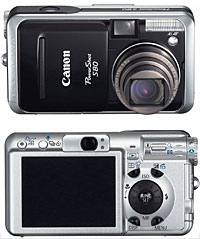 The camera packs in some advanced features including real-time histogram display, FlexiZone AF/AE with a freely movable focus point and manual focus override with 21 shooting modes taking care of most lighting conditions.
The camera packs in some advanced features including real-time histogram display, FlexiZone AF/AE with a freely movable focus point and manual focus override with 21 shooting modes taking care of most lighting conditions. 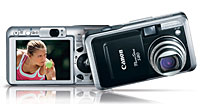 Surprisingly, RAW capture has been left off the spec list, although there’s USB 2.0 compatibility to help speedily transfer images to a PC speedily.
Surprisingly, RAW capture has been left off the spec list, although there’s USB 2.0 compatibility to help speedily transfer images to a PC speedily. 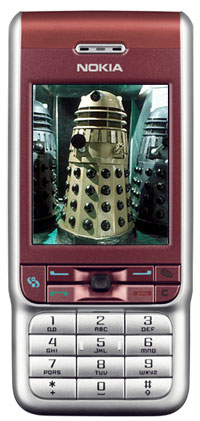 The BBC has announced that it will be offering classic episodes of “Doctor Who” and “Red Dwarf” on digital video chips for viewing on mobile phones.
The BBC has announced that it will be offering classic episodes of “Doctor Who” and “Red Dwarf” on digital video chips for viewing on mobile phones.  Films can be fast forwarded, rewound and paused, just like a conventional movie player.
Films can be fast forwarded, rewound and paused, just like a conventional movie player. 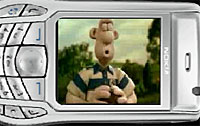 The first scheduled release is The Five Doctors, a 90-minute Dr Who special originally shown in 1983, followed by three episodes of cult sci-fi hit, Red Dwarf.
The first scheduled release is The Five Doctors, a 90-minute Dr Who special originally shown in 1983, followed by three episodes of cult sci-fi hit, Red Dwarf.